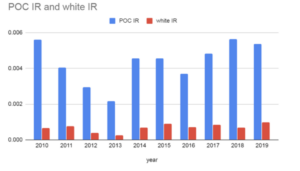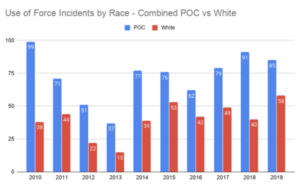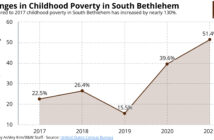While implementing an implicit bias training program may be well-intentioned, it may not be what the police department — or the community — actually needs. Being aware of implicit bias is important and can start the conversation, but it is not the entire conversation.
Community members and researchers are able to view this issue from an on-the-ground perspective.
Members of the community have discussed their thoughts on the implementation of an implicit bias training program — whether it will work, what the implementation of the program means in relation to the background of the department or even if it’s a step in the right direction
Jon Irons has been a Bethlehem resident for three years and volunteers with Lehigh Valley Stands Up focusing his work on political education and police accountability. Allison Mickel is both a Bethlehem resident and assistant professor of anthropology at Lehigh University. Mickel is also involved with Lehigh Valley Stands Up and local organizing work on policing.
With recent events calling for the defunding of police, the implementation of an implicit bias training program has come into sharper focus.
Is it good? Is it bad? On the one hand, the police department is working to recognize their own biases. On the other hand, more training requires more funding.
Already, approximately 20 percent of the city’s general funds budget is allocated to the police department.
“I think that the police is already receiving more than adequate enough money for training and other department needs,” Irons said. “If they are truly committed to diversity and inclusion and combating systemic racism, they will work with the budget they are already given.”
There is also the question of whether or not the implementation of the program will actually help the situation.
Gordon Moskowitz, professor of psychology at Lehigh University, has studied implicit bias for 30 years and has explained that it is a tough call because of the number of variables involved.
“It’s a new market. There is no way to prove at the moment that an intervention is working; many firms are interested in just showing that they’ve done something,” Moskowitz said. “So, they can at least say that they’ve done something.”
This can open up the door to a number of actors claiming their program works without having any reliable data behind it.
Without a way to regulate who is allowed to perform this training, some programs can do more harm than good.
Still, even if done correctly, it may not get to the root of the problem.
“Understanding that racism exists doesn’t stop people from being racist,” Irons said.
Mickel provided a chart displaying data for the use of force incidents for persons of color versus white persons. The information was collected from the published Use of Force and Crime Report documents by Lehigh Valley Stands Up.
Some dramatic disparities are evident.
According to the data, people of color make up 60-80 percent of incidents of use of force compared to 44 percent of the city and whites between 30-40 percent compared to 60 percent of the city.
The single largest age range subject to the use of force is 18- to 25-year-olds, an average of 37 percent of the use of force incidents. There are about eight to nine minors subject to force each year.


These graphs depict data from The Crime Report and Use of Force document showing disparities between use of force against people of color and use of force against white people. The first depicts raw data while the second depicts incidence rate. The graphs are courtesy of Allison Mickel and Holona Ochs.
“The design of policing from the beginning means that, as an institution, it is not set up to be anti-racist,” said Mickel.
This stems from the understanding that policing came out of protecting private property and returning people escaping enslavement to their slave masters.
“Contemporary policing still holds on to the legacy of its origin,” said Mickel.
If implementing an implicit bias training program isn’t exactly meeting the needs of the community, then what is suggested?
Irons has spoken with members of the city council, himself, about what needs to be changed so that community issues can be addressed appropriately.
“We’ve made it pretty clear what our goals are. Anti-racist training and implicit bias training is not what we need for meaningful change,” said Irons.






Comment policy
Comments posted to The Brown and White website are reviewed by a moderator before being approved. Incendiary speech or harassing language, including comments targeted at individuals, may be deemed unacceptable and not published. Spam and other soliciting will also be declined.
The Brown and White also reserves the right to not publish entirely anonymous comments.
1 Comment
This is great stuff. Can we now get these graphs in male vs. female?? Will you now draw the same conclusion that a disparity automatically equals discrimination??